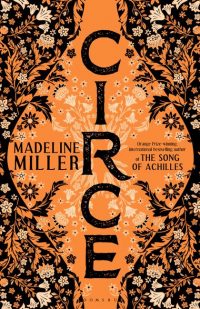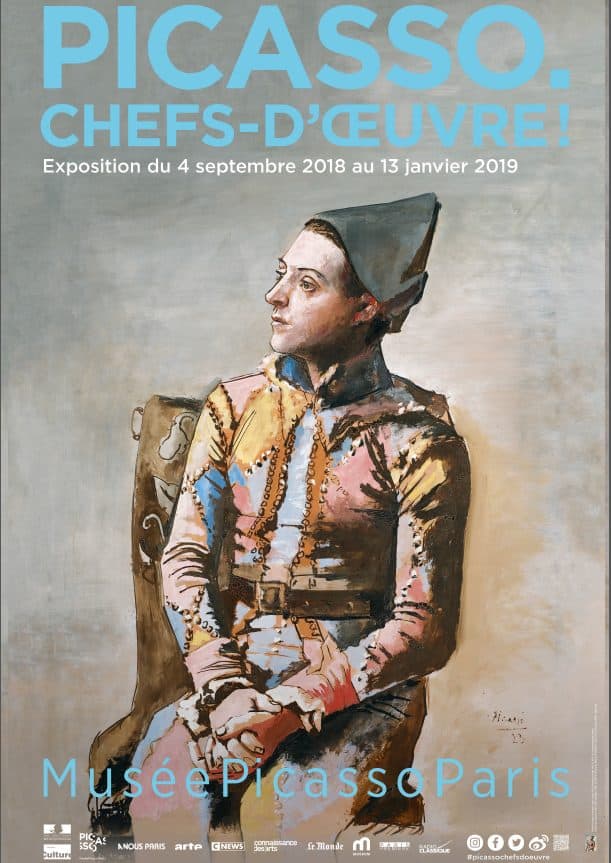
Modern takes on Greek Mythology by Olga Ospina
12 November 2018
Library Culture Picks from Mike Duffy: December 2018
5 December 2018This month’s Culture Picks by Mike Duffy give us an excellent sense of the pivotal role Picasso played as Paris embraced the Modern Art movement. Mike shares with us his impressions of three in-depth exhibitions: one, Picasso Masterpieces! explores some of the prominent exhibitions, articles and publications that accompanied his artwork which forged their reputation as masterpieces over the years; the second, Cubism, is centered on Parisian artists in the decade when Cubism was created, developed, and overtaken by World War I and the period thereafter; finally, Picasso. Blue and Rose focuses on six critical years in Picasso’s artistic development before he launched the Cubism movement with Georges Braque.
Picasso Masterpieces! (Picasso Chefs-d’oeuvre!)
National Picasso Museum
to 13 January 2019
The tremendous creativity of the 20th Century’s genius-artist Pablo Picasso is displayed in this amazing exhibition. The title may be misleading; here there are not the original masterpieces as that term is commonly understood — no Guernica, no painting of Les Demoiselles d’Avignon. Instead, there is an engaging exploration of the boundless creativity of someone who worked in paintings and prints, in sculpture and collage, in wire and cardboard, as well as in styles as diverse as Realism, Cubism, Dada and Classicism, as well as, in the end, styles uniquely his own. These are, indeed, pieces by a master, pieces through which the curators invite us to explore the question of what is a masterpiece. The invitation, too, is there to delight in works ranging from playful to pathbreaking.
A maker and breaker of styles, Pablo Picasso (1881 – 1973) surprised and sometimes shocked the world with his talent, his innovations and the beauty of his work. Science and Charité (Science and Charity, 1897) depicting a deathbed scene typical of the late 19th Century won two major prizes and showed his mastery of drafting and painting skills at age 15. Sketches and studies as well as magazines touting this newly arrived talent in Spain are also on display. In 1907, however, after a year’s work on the canvas, Picasso announced the beginning of what we call Modern Art with Les Demoiselles d’Avignon (The Young Ladies of Avignon, 1907) with five jarring female figures. The preliminary sketches show how his conception of the painting evolved to a revolutionary incorporation of the faces and eyes found in Catalan and African masks. The final work, which does not travel from the Museum of Modern Art in New York, is “present” through one of the three tapestry copies made in cooperation with Picasso. The next year Picasso and Georges Braque would develop Cubism and forever change art and artists. Also, three beautiful 1923 paintings of a Harlequin, a recurring figure in Picasso paintings and drawings, are hung together. These combine a Classical approach with elements of Cubism and show the continuing mixing of styles that mark his work throughout his lifetime. Each figure’s dignity and sadness are very moving, while Arlequin au miroir (Harlequin with a mirror), started as a self-portrait, also reflects the ideal nobility and fragility of the artist.
Picasso worked magic with the traditional tools of artists — oil paint, pencils, printers’ stones, bronze and wood — and the unusual — bits of wire, a scrap of cardboard, wall paper — to create works both great and whimsical. Considered the inventor of collage, he incorporated cut pieces of wallpaper, bits of colored paper and gouache in the recently restored, almost 10’ by 15’ Femmes à leur toilette (Women at their toilet, 1938), with Neo-classical and Surreal elements, depicting four different women in his life in a scene of hairdressing which repeats in his work as well as in the works of Japanese artists along with Degas and Renoir. (Don’t miss the wonderful portrait of his then companion, assistant, inspiration Dora Maar nearby.) Revealing his endless energy and fascination with making things, the room filled with individually displayed Objects is delightful and the interspersed photographs of the objects by the great Brassai position these seemingly childish efforts as works of an artist who said that he spent his life learning how to create freely like a child. In addition, a room containing four sculptures, one from each decade of the 1930s to 1960s, shows the range of his talent; the variety of materials used — bronze, stone, wood, plaster and even the wheels from a table; and the span of his creative life. The marvelous photographs of David Douglas Duncan of Picasso with his wife and children living amidst these sculptures add a human, familial dimension to the exhibition.
There are a great many additional works on display. Notable are La Danse (The Dance, 1925), a 7’ by 4.6’ Surrealist influenced, somewhat mysterious painting on loan from the Tate Modern; a series of the unusual, unique bathers painted as Spain fell into civil war; marvelous prints and posters from the Post-War period of Picasso’s great partnership with the lithographer Fernand Mourlot, including 14 lithographs from the Femme au fauteuil (Woman in an armchair, 1948) series and a selection of the 125 dramatic plates they created for the book Les Chants des morts; as well as a splendid re-creation of the hanging of his final, initially controversial, works in the Palace of the Popes in Avignon. There are works that Picasso kept in his studio throughout his life, works which are rarely seen in Paris, along with documentation of the critical reaction to the works. The exhibition welcomes those who wish to join in the endlessly inventive zigs and zags of a genius as well as those who wish to enjoy rarely seen works beautifully displayed.
Cubism 1907 – 1917
Pompidou Center
through 25 February 2019
Cubism 1907 – 1917 aims to show that Cubism should be regarded as an inventive force rather than as a singular vision, and this outstanding exhibition hits its mark squarely. Focused on a ten year span in Paris, the curators push us to confront the common view of Cubism as a revolutionary break rather than as an inheritor of a developing European artistic language; the notion that Cubist painting is largely monochromatic rather than boldly colored; the sense that the works are flat and static rather than dynamic and dimensional; and, finally, the conundrum of whether the works are realistic or abstract. Through the paintings, sculptures and works on paper of dozens of artists, a new appreciation develops of a self-aware, experimental collective, including poets, musicians, playwrights, who did not see the creative license granted during the period as incorporating only one style or approach. Although many of the individual works here are striking, the exhibition as a whole is multi-faceted and layered in ways that expand our understanding and appreciation of a period in which the conception of what art is changed profoundly, thereby changing the course of art and culture ever since.
Cubism was a rebellion, yes, but it developed from a line of rebels in philosophy, psychology, literature, and, particularly, in painting. From Cézanne, most importantly, these artists learned a new way of presenting very flat, simultaneous views of objects, buildings and nature; from Gaughin, a bold capturing of a truly primitive spirit in flat, striking colors; from Matisse the use of black outlines, fabric and more colors; and from exhibitions of African art, an inspiring non-Western primitivism. In addition to those avant garde painters, the start of the 20th Century heard poets and psychologists speaking about the unconscious, dreams and varied perceptions of reality which were also reflected in the sciences as the insights of Freud and Einstein permeated intellectual, artistic and even popular spheres. The Cubists gathered these strands and struck out against the precepts of dominant cultural institutions, starting with Picasso’s sketches for The Young Women of Avignon (Les Demoiselles d’Avignon, 1907) and the brilliant, small paintings of the village of L’Estaque by Braque in 1908.
The fractured, confusing presentation of elements of daily life — bottles, glasses, musical instruments — startled critics and the public alike. Traditional painting seemed to show in a single view elements which a viewer could not really perceive all at once. The new style emphasized that, in fact, a viewer gathers bits of information and then constructs them into a whole. These conflicting, fragmentary, incomplete bits rather than the entirety of objects or a scene were the concern of these painters just as they were of those studying dreams or the physical world.
There was a geometry in the flattened volumes on canvas, wood and cardboard and this also shows in the excellent array of sculptures by Mondrian, Brancusi, Derain and especially in the works by the too little noticed Henri Laurens. These sculptures and assemblages include both flattened and very three-dimensional forms. The model of Picasso’s cardboard sculpture Guitar (Guitare, 1914) which shows the outside and inside of the instrument at once brings depth and dimensionality to the fore. Most notable, though, is his Head of a woman (Tête de femme 1907). Taking a classical form, the sculpture of a person’s head, Picasso moves us through different viewpoints in a single, complex work, clearly announcing that traditional assumptions about art and reality are being overturned. Yet, in many ways, the early Cubists insisted that they were presenting reality. The titles of the works indicate observation of people, places and objects were central to this new form of realism.
Gray and brown dominate Braque and Picasso’s early paintings and later works by Juan Gris as they experimented with increasingly fragmented views of villages, guitars and still lifes, but soon they and others added color, texture, and new materials while some brought in dynamic depictions of movement. Fragments of newspapers, signs, letters and numbers continued to link the works to daily life as Braque added sand and faux wood grain to his works and Picasso pasted pieces of paper to his. (For a period, the two artists looked at each other’s output every evening and subject matter, style and techniques moved very quickly from one to the other. Works shown side-by-side illustrate the difficulty of distinguishing which artist produced which painting or technique.) Immediately, though, bright colors, swirling curves and circles, for example, Sonia Delaunay’s Prismes Électriques (Electric Prisms, 1914) and Francis Picabia’s Udnie (Young American Girl, The Dance) (Udnie (Jeune fills américaine; Danse), 1913), and an emphasis on urban life and sports in works by Robert Delaunay and others broke into the Cubist world. Completely abstract works such as Léger’s series Contrast of forms (Contrastes des formes, 1913 – 1915) broadened the movement by abandoning references to the observable world and titling works to emphasize their non-representational goal.
This exhibition focuses on Paris during the years immediately before and during World War I, a period in which the art world forever changed as did the political, social and intellectual spheres. There followed in the arts a “return to order” as people retreated from the unsettling chaos of the war, but the germ of creativity, the insights regarding how we view the world and the experimental impulse of Cubism inspired artists who moved into Dada, abstraction and a myriad of movements. Collage and installation art, for example, begin in this time and place with Picasso, Braque and their friends and followers. This outstanding exhibition reminds us of the breadth of the change which took place, the many artists involved, and their more than hundred year legacy. Kudos to the curators and the Pompidou Center.
- the Pompidou Center has English language tours each Saturday at 5 P.M


